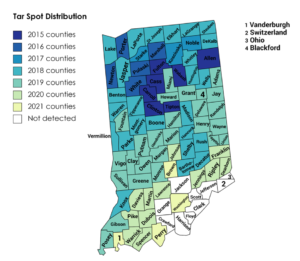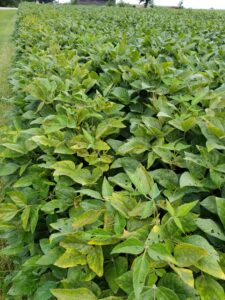Research Blog
Applied Research in Field Crop Pathology for Indiana – 2022
READ MORETwo biofungicides, Coniothyrium minitans and Bacillus amyloliquefaciens, are currently available and labeled to limit or suppress S. sclerotiorum in soybean. These biofungicides can be applied…
READ MOREGreat representation of our field crop pathology graduate research projects at the Purdue Ag and Engineering Convergence Networking Event.
READ MOREBy Kaitlin Waibel Quinone outside Inhibitor (QoI) fungicides are effective against a wide range of pathogens on many crop species including C. Sojina in soybeans.…
READ MOREBy Kaitlin Waibel In 2018, tar spot was the third highest yield reducing disease of corn despite only being confirmed in only six states, but…
READ MOREBy Kaitlin Waibel Farmers use financial risk assessment to justify foliar fungicide applications, but yield losses and pesticide overuse can result from producers applying using…
READ MOREhttps://ag.purdue.edu/arge/Pages/Spotlight-Ross.aspx
READ MORETar spot is a foliar disease of corn that has emerged as a dire economic threat to the United States Corn Belt. Tar spot is caused…
READ MORESoybean Sudden death syndrome (SDS) is known to be one of the most yield limiting soybean diseases in the United States. SDS is caused by…
READ MOREFrogeye leaf spot (FLS) is caused by the fungal pathogen Cercospora sojina Hara., and reduces soybean yields in most of the major soybean-producing countries in…
READ MORE





